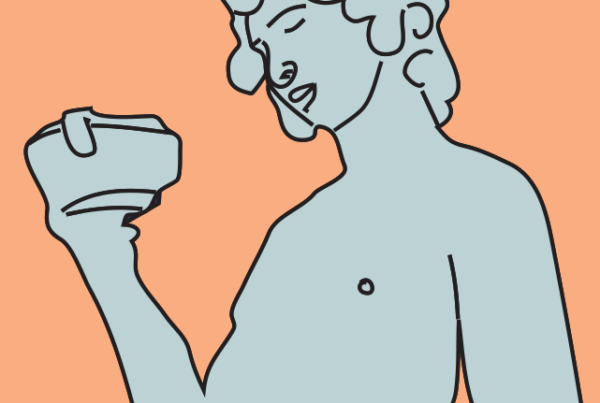
Dear Readers,
There is a famous saying which posits that the only two things which are certain in life are taxes and death. However, between these humorously deprecating lines, we may find that there is a third ever-present constant in our lives: uncertainty. Everyday, we make decisions without knowing their outcome, take leaps of faith, and sit on the edge of our seats with adrenaline, hoping our best bets paid off. We invite you to read Spiegeloog 436: Risk, the last issue of this calendar year, in which we explore the caveats of reaching for what we want in the face of uncertainty.

Cover Photo by Refat Ul Islam
We kick off this issue with Viktor’s piece on AI in education, which discusses how the introduction of widely accessible generative AI sculpts the academic landscape. Next, Brage’s piece on attachment theory discusses how in relationships, connection is the reward we reap for the risk of vulnerability. In her piece, Aki asks us to consider how public spaces can be unsafe for women, and how virtual reality may be a useful tool in assessing their shortcomings. Mykolas then introduces us to the neuroscience of gambling, explaining how behavior becomes addicting. His piece is followed by Nora’s article, which inspires introspection on the role of confession in Christian religions and how their inherent risk is coupled with relief.
Next, Hanna approaches AI once more, discussing the way that Large Language Models shape our use of language and expression. The potential consequences of thinking in black and white are then tackled by Ritwika. Closing that week of articles, Anda gets us to think about an unlikely topic – she ponders on how manipulation shapes the identity of the manipulator. In this issue, we get to present the winning Propaedeutic Thesis of the past academic year, as well as the answers from our next guest on Ask the Expert. To further explore the topic of polarity, Julia expands on the factors that make one more vulnerable to radicalization.
Continuing, Evita discusses the impact of being raised biculturally on one’s identity, how it may create more resilience as well as fracture cohesive self-image. Next, Lioba broaches the topic of network models, and explains how mapping concepts from mental disorders to planetary health in this way may help us see them as complex interconnected constructs, rather than individual issues. Finally, Shriya B. closes this issue with Bacchus, featuring her personal take on the idea of risk.
We hope you enjoy this issue, and perhaps feel more at ease the next time you decide to risk it.
Shriya & Jules
Dear readers,
There is a famous saying which posits that the only two things which are certain in life are taxes and death. However, between these humorously deprecating lines, we may find that there is a third ever-present constant in our lives: uncertainty. Everyday, we make decisions without knowing their outcome, take leaps of faith, and sit on the edge of our seats with adrenaline, hoping our best bets paid off. We invite you to read Spiegeloog 436: Risk, the last issue of this calendar year, in which we explore the caveats of reaching for what we want in the face of uncertainty.

Cover Photo by Refat Ul Islam
We kick off this issue with Viktor’s piece on AI in education, which discusses how the introduction of widely accessible generative AI sculpts the academic landscape. Next, Brage’s piece on attachment theory discusses how in relationships, connection is the reward we reap for the risk of vulnerability. In her piece, Aki asks us to consider how public spaces can be unsafe for women, and how virtual reality may be a useful tool in assessing their shortcomings. Mykolas then introduces us to the neuroscience of gambling, explaining how behavior becomes addicting. His piece is followed by Nora’s article, which inspires introspection on the role of confession in Christian religions and how their inherent risk is coupled with relief.
Next, Hanna approaches AI once more, discussing the way that Large Language Models shape our use of language and expression. The potential consequences of thinking in black and white are then tackled by Ritwika. Closing that week of articles, Anda gets us to think about an unlikely topic – she ponders on how manipulation shapes the identity of the manipulator. In this issue, we get to present the winning Propaedeutic Thesis of the past academic year, as well as the answers from our next guest on Ask the Expert. To further explore the topic of polarity, Julia expands on the factors that make one more vulnerable to radicalization.
Continuing, Evita discusses the impact of being raised biculturally on one’s identity, how it may create more resilience as well as fracture cohesive self-image. Next, Lioba broaches the topic of network models, and explains how mapping concepts from mental disorders to planetary health in this way may help us see them as complex interconnected constructs, rather than individual issues. Finally, Shriya B. closes this issue with Bacchus, featuring her personal take on the idea of risk.
We hope you enjoy this issue, and perhaps feel more at ease the next time you decide to risk it.
Shriya & Jules



